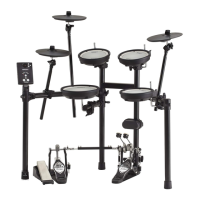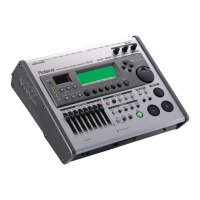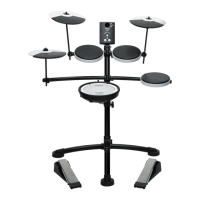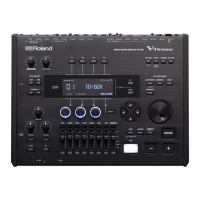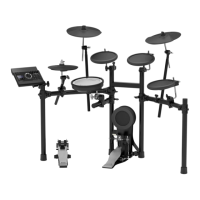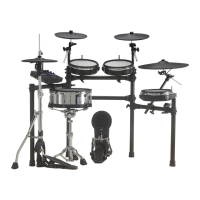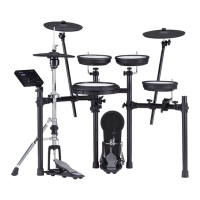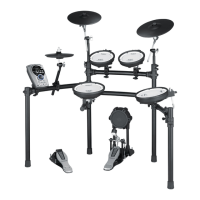26
Basic Operation
Changing a Value
Saving your settings
On the TD-30, values you edit are saved automatically by overwriting the previous value; there is no need to perform a specic
operation to save the settings. Settings are also saved when you turn o the unit.
Moving the cursor (cursor buttons)
Cursor
Cursor refers to the highlighted characters indicating an on screen parameter that can be set. When there is more than one
possibility within the screen, use the cursor buttons to move it.
Changing data values ([–] [+] buttons/dial)
The [–] and [+] buttons and the dial are both used to change the
values of settings.
Both methods have advantages.
[–] [+] buttons
• Each time the [+] button is pressed, the value increases. Each
time the [–] button is pressed, the value decreases. This is
convenient for ne adjustments.
• When making an on/o setting, the [+] button will turn the
setting on and the [–] button will turn it o.
• If you hold down the [+] button and press the [–] button, the
value will increase rapidly. If you hold down the [–] button and
press the [+] button, the value will decrease rapidly.
• If you hold down the [SHIFT] button and press the [–] or [+]
button, the value will change even more rapidly.
Dial
This allows you to make large changes in the value by a single operation, so it’s convenient when editing a parameter that has
a large range of values.
The value will change in larger steps if you turn the dial while holding down the [SHIFT] button.
Selecting a function to edit (function buttons)
The [F1]–[F5] buttons are called “function buttons.” The bottom part of the display will show the names of the functions
available for the [F1]–[F5] buttons. For example, if this owner’s manual makes reference to the [F2] (EDIT) button, press [F2]
button (in this case, “EDIT” is displayed above the [F2] button).
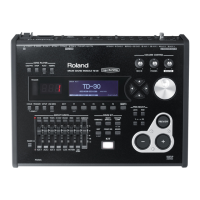
